From A Page of Madness (1926) to mother! (2017), here are the best mind bending movies.
Movies are often defined by the mechanics of story, plot, and genre. Hollywood came up with the irresistible and successful three-act structure of set-up, confrontation, and resolution. But cinema isn’t confined by time and space, unlike other artistic mediums such as theatre and painting. Films do deviate from popular wisdom and established conventions. Most of the time, that is reflected in the unorthodox manner of storytelling. However, mind-bending films – or its less polite synonym mindf*** movies – go beyond that and inventively play with the film form.
Cinema has been messing with its viewers’ minds from its inception. There was the illusionist-turned-filmmaker Georges Méliès whose whimsical ‘trick’ films brought the idea of magic and spectacle to cinema. Then in the early 1920s, avant-garde artists came together to re-evaluate and rebuild the cinematic conventions. Despite the rapid commercialization of cinema across the globe, the demand for experimental and non-narrative cinema has grown over the years.
In fact, what was once considered as avant-garde and impenetrably surrealist gradually became part of popular cinema. For instance, a connection could be found between Jean Cocteau’s dreamscape in The Blood of a Poet (1932) to the dream-corridor set-piece in Christopher Nolan’s mind-bending blockbuster Inception (2010).
In the list below, I have tried to include as many such films with a complex and somewhat indecipherable film form. This naturally leads to the omission of some familiar movies with unconventional narrative structure and surprising twists. That includes the often mentioned Jacob’s Ladder (1990), The Machinist (2004), Triangle (2008), Mr. Nobody (2009), Predestination (2014), The Butterfly Effect (2004), Oldboy (2003), Coherence (2013), and Shutter Island (2010). Very quickly then, here are 40 mind bending movies that’ll mess you up.
WATCH: 10 Coolest Mind F*** Movies
Mind Bending Movies
1. A Page of Madness (1926)

Teinosuke Kinugasa’s mind-bending avant-garde masterpiece was influenced by European silent experimental works. It was written in collaboration with the future Nobel-Prize winning author Yasunari Kawabata. The narrative is set in an insane asylum, where a man gets a job as a janitor. The man is a retired sailor and he is there to take care of his afflicted wife, who has tried to kill their child. The film contains no intertitles, it gradually disengages from narrative logic and embraces frenzied, dream-like imagery. The result is a startlingly original tale about madness.
2. Jean Cocteau’s Orphic Trilogy (1932, ‘50, ‘60)
Jean Cocteau was a multi-hyphenate artist who used different means of expressions available to him. He was a poet, novelist, illustrator, playwright, and also a filmmaker. Cocteau was an accomplished artist in France from his early age. But in his 40s, he turned to filmmaking and made the groundbreaking avant-garde film, The Blood of the Poet (1932). This was the first of his thematic trilogy, which was followed by Orpheus (1950) and Testament of Orpheus (1960). Cocteau’s reality-bending Orphic Trilogy is concerned with poems and myth, and further examines the complex relationship between the artist and his art.
3. Last Year at Marienbad (1961)
A quintessential work of 1960s European arthouse cinema, Alain Resnais’ Last Year at Marienbad is a languorous and surrealistic exploration of memory, loss, and love. The script was written by the French master of avant-garde novels, Alain Robbe-Grillet. The narrative is set in a baroque, luxurious hotel, and starts with a man confronting a woman, who he claims meeting a year ago. Sounds simple, right? But the fragmented narration and the striking stylization turns this into a haunting journey inside someone’s memory. Earlier in the movie, a character remarks, “trying to make sense of it doesn’t make any sense.” That sentence perfectly suits the movie.
4. The Exterminating Angel (1962)
Spanish auteur Luis Bunuel has been crafting taboo imagery and mind-boggling scenarios right from his 1929 path-breaking short Un Chien Andalou. He has followed it up with many surrealist fables throughout his five decade-filmmaking career. Exterminating Angel was the most notable among the Bunuelian mindf***s, where the bourgeois guests of a high-society dinner party are unable to leave the manor. There’s no rational reason offered to the guests’ inability to leave, although the working or serving class have already fled. Overall, this film is a caustic satire on the hypocrisies of the ruling class.
5. The Saragossa Manuscript (1965)
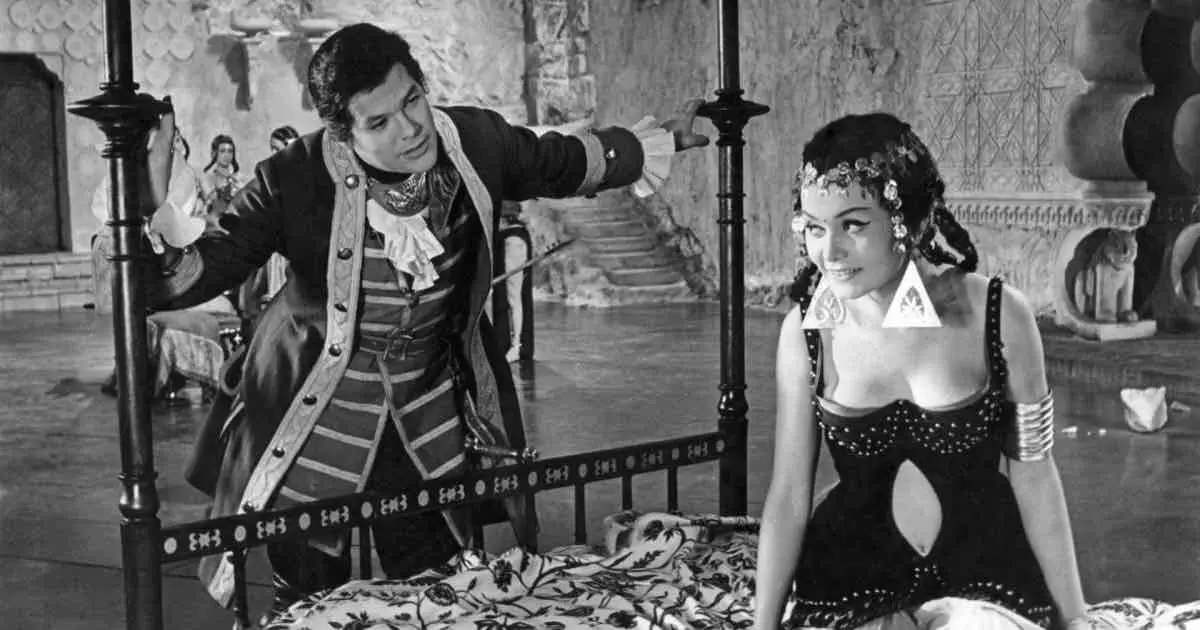
The Manuscript Found in Saragossa was an epic frame-story novel which can be perceived as the European counterpart to Arabian Nights. It was written in the 19th century by the Polish author Jan Potocki. Wojciech Has’ movie adaptation largely stays faithful to the novel and takes us on a disorienting, picaresque journey filled with Gothic landscapes, folkloric beasts, and exotic princesses. The narrative is set in Spain during the Napoleonic Wars (1803-1815). The film opens with an officer retreating to an inn and stumbling upon a mysterious manuscript. What follows is a hilariously convoluted narrative.
6. Persona (1966)
Ingmar Bergman’s Persona is a quintessential arthouse cinema that later inspired Altman’s 3 Women (1977) and David Lynch’s Mulholland Drive (2001). The film is about a nurse (Bibi Andersson) who struggles to take care of a famous stage actress (Liv Ullmann), recently rendered mute due to a psychological breakdown. They are at a placid and isolated seaside cottage, where strangely their identities begin to emerge. Bergman is known for his philosophical masterpieces like Seventh Seal, Wild Strawberries, The Silence, etc. Persona is increasingly abstract and seemingly inaccessible. Yet its mesmerising imagery slowly leads us into multiple layers of subtext and philosophical musings.
7. Happy End (1967)
Czech New Wave cinema offered quite a few beguiling cinematic experiments. Perhaps, the most craziest and innovative among them was Oldrich Lipsky’s Happy End. Lipsky used reverse chronology in his narrative long before Lee Chang-Dong, Christopher Nolan, and Gaspar Noe employed it. The film literally moves backwards. The voice-over provides you with a fine ironic counterpoint alongside the reverse motion comedy. The film opens with our protagonist getting officially executed. His recently decapitated head joins with his body, but the voice-over informs us of the man’s birth. Happy End offers a mind-bending experience, and it takes quite some time to get used to the idea.
At the same time, at a 71 minute-run time, it doesn’t overstay its welcome.
8. Weekend (1967)
Almost all of Jean-Luc Godard’s films are formally experimental and unconventional. Even decades after the French New Wave cinema, Godard continues to subvert the traditional ideas of cinematic narrative. In Weekend, Godard liberates his film from narrative constraints and offers a free-wheeling and absurdist dark comedy. It opens with a married bourgeois couple driving away from Paris for a weekend in the countryside. They are caught in a massive traffic jam that quickly descends into chaos, anarchy, and cannibalism. Overall, it’s a savage denunciation of the Western Society’s hypocrisies and absurdities.
9. 2001: A Space Odyssey (1968)
WATCH: 2001: A Space Odyssey EXPLAINED
Stanley Kubrick’s epic sci-fi, co-developed with Arthur C Clarke, blows your mind conceptually and visually. Titled ‘Dawn of Man’, the film opens with a chapter tracing the beginnings of humanity. Then after a tense showdown between the man and a sentient machine, we are left to unpack the meaning of the head-scratching third-act. Kubrick doesn’t offer a clear-cut verbal answer to what happens from the ‘Stargate’ sequence. But on the whole, the narrative gives us ample space to interpret its allegorical and philosophical meanings.
10. The Colour of Pomegranates (1969)
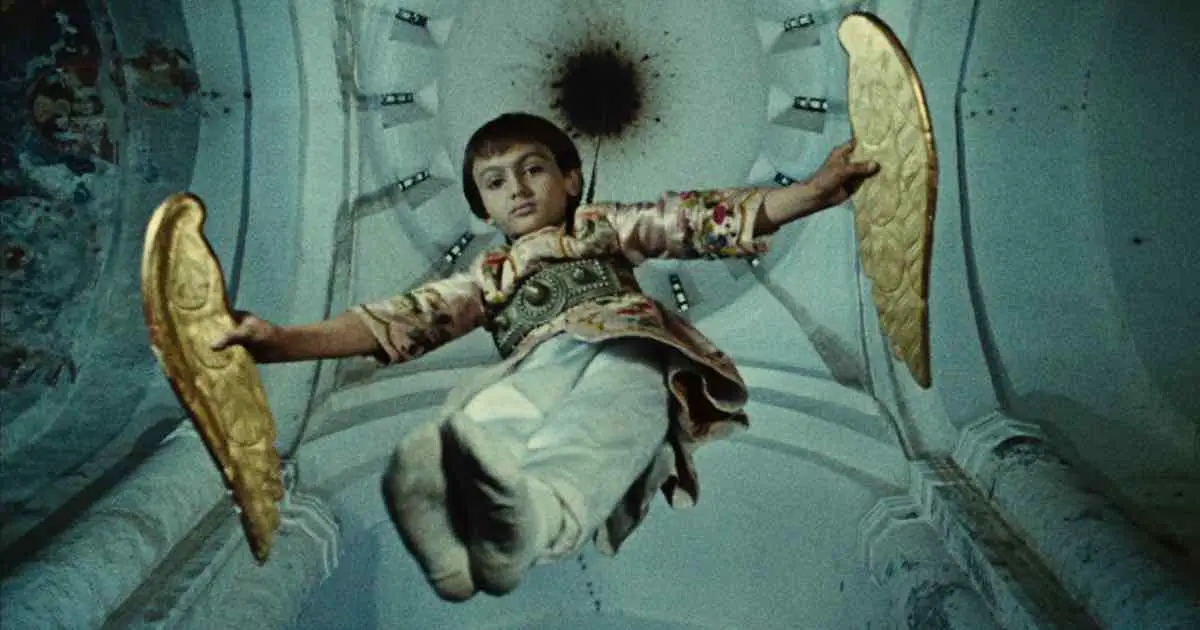
The dense and beautiful visual language of Armenian Soviet-era filmmaker Sergei Parajanov is so personal and hermetically sealed that it’s hard to interpret its meaning. At the same time, if we have the patience for Parajanov’s unconventional style, there’s a lot to enjoy and cherish. The Colour of Pomegranates was Parajanov’s most cryptic work which leaves with us a series of tableaus that recount the life of 18th century Armenian poet Sayat Nova. The exotic imagery is mostly drawn from Sayat Nova’s poems and the film doesn’t carry a conventional biopic structure.
11. Solaris (1972)
Andrei Tarkovsky’s Soviet sci-fi classic, based on Stanislaw Lem’s seminal novel of the same name, plumbs into the depths of human consciousness to reflect on the themes of grief, identity, existence, and death. The narrative focuses on psychologist Kris Kelvin, who is sent to investigate the mystery surrounding the oceanic planet Solaris. Upon arriving, Kris finds that one scientist has committed suicide, and the other scientists are deeply unsettled. What happens next doesn’t have a rational explanation. Solaris was one of Tarkovsky’s most dense and enigmatic works. Its contemplative tone and abstract imagery don’t offer easy answers.
12. The Holy Mountain (1973)
Controversial Chilean filmmaker Alejandro Jodorowsky is hailed as the granddaddy of mindf*** cult classics. In 1970, he made the psychedelic Western El Topo. With Holy Mountain, Jodorowsky only takes his mystical surrealism and absurdism to deeper and mind-altering levels. It’d be senseless to summarise the film’s plot. It can’t prepare you for the phantasmagorical journey at its centre. In fact, a string of bizarre imagery moves forward the narrative, which gradually delivers a satirical critique on religious symbols, 20th century dictatorships, and counterculture.
13. Pastoral: To Die in the Country (1974)
Shuji Terayama is hailed as the master of the Japanese avant-garde. The kaleidoscopic and bewitching Pastoral: To Die in the Country is partly based on the filmmaker’s childhood memory. The film’s wafer-thin plot revolves around a 15-year old boy who wants to find a way to move out of his village, and to escape from the clutches of his possessive mother and the conservative society. Although the basis of Pastoral sounds simple, our young hero’s journey follows dream logic, and is littered with many bizarre encounters. Terayama offers a vision of childhood that is at once confounding and beautiful.
14. 3 Women (1977)
Robert Altman was predominantly known for his 70s Golden Age Hollywood classics like M*A*S*H, The Long Goodbye, McCabe & Mrs. Miller, and Nashville. But he has also made a few underrated psychodramas like Images and 3 Women that focus on the transient nature of the individual’s psyche. The narrative is set in a Californian rehabilitation spa and revolves around three female leads (played by Shelley Duvall, Sissy Spacek, and Janice Rule). It explores and deconstructs the male view of femininity through a dream-like narrative that’s equally baffling and intriguing.
15. Possession (1981)
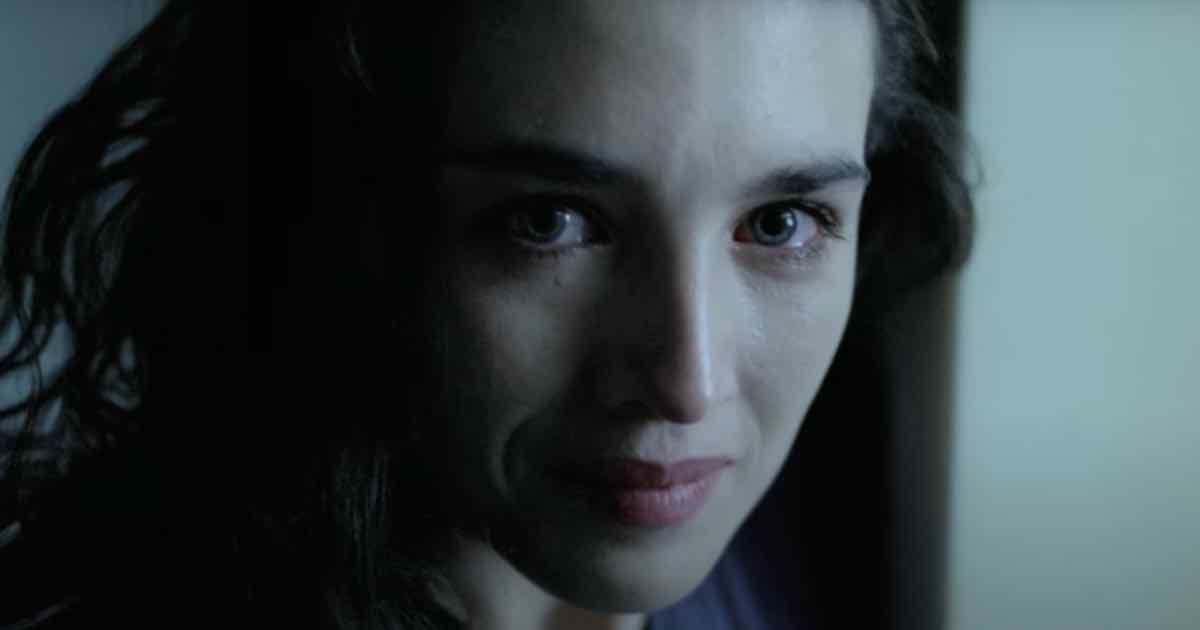
Polish filmmaker Andrzej Zulawski’s works are unusual, grim, and can be impenetrable. His controversial 1981 psychological horror garnered him international attention, and furthermore Possession gained cult status over the years. The film is anchored by the manic performance of Isabelle Adjani, who plays the estranged wife Anna. Her possessive husband Marc (Sam Neill) finds out that Anna has an on-going affair. Chaos is unleashed when Anna’s lover’s identity is revealed. As usual, Zulawski’s visual language is shockingly confrontational as well as ambivalent. He offers an interesting and revolting movie experience that’s hard to shake off.
16. Pink Floyd: The Wall (1982)
Alan Parker’s Pink Floyd: The Wall is based on the English psychedelic rock band Pink Floyd’s 1979 album The Wall. The deeply metaphorical and symbolic imagery of Pink Floyd’s music album is effectively transferred to the screen through an episodic narrative. The basic plot revolves around Pink, a rock singer who has isolated himself in a hotel and reminisces about his dark past. Parker’s multi-layered imagery is accompanied by Gerald Scarfe’s surrealistic animation. The meaning behind the imagery and the lyrics are open to interpretation, and in fact at times it can prove to be difficult to follow.
17. Alice (1988)
Since the 1960s, Czech surrealist and animator Jan Švankmajer has made trail-blazing short films that were designed to mess with the viewers’ mind. Alice was his scary and disturbing interpretation of Lewis Carroll’s literary masterwork. Combining live-action and puppet animation, Alice is narrated by the titular little girl who takes us into her world of imagination. Švankmajer brings his own obsessions and pet themes to cleverly reorder Carroll’s original text. The film also carries a lot of political metaphors, as Švankmajer worked under a Communist regime that considered surrealist productions to be subversive.
18. On the Silver Globe (1988)
Andrzej Żuławski’s unfinished Polish sci-fi epic was based on The Lunar Trilogy, which was first published in 1903. The film is set in a distant planet that is Earth-like, and a group of cosmonauts crash land there. The survivors have children and spawn a new human race. Though the plot sounds simple, there are multiple segments in the narrative that make it easy to get lost in the labyrinth. Moreover, Żuławski’s grand production design, mind-bending staging and philosophical musings intrigue as well as exhaust us. Overall, On the Silver Globe is a mad-eyed look at the nature and history of humanity.
19. Om-Dar-B-Dar (1988)
Kamal Swaroop’s daring and experimental Indian art house cinema has gained a cult following over the years. The narrative unfolds as a series of confounding non-sequiturs, and follows the misadventures of Om, an adolescent boy interested in mysticism and science. Kamal Swaroop concocts a lot of subplots and supporting characters, but it’s hard to comprehend all in a single viewing. At the same time, Om-Dar-B-Dar doesn’t demand to be understood, but provides us with a trippy experience that blends together ancient myth, political commentary, and pop-commercialism.
20. Perfect Blue (1997)

Satoshi Kon’s flawlessly edited animated movies are designed to mess with our mind. While Paprika, which moves between the reality and dreamscape, would be a fine addition to the list, I find Perfect Blue to be more chilling and complex. The anime starts off as a fairly conventional mystery with a pop idol named Mima being stalked by a toxic fan. And soon, Mima starts losing her grip on reality. Satoshi Kon brilliantly replicates Mima’s mental state blurring the lines between what’s real and what’s hallucination.
21. Open Your Eyes (1997)
Alejandro Amenabar’s haunting and utterly original Spanish feature shifts between alternate realities to deal with the themes of obsessive love and personal identity. Open Your Eyes starts off as a boy-meets-girl story with the rich and handsome Cesar meeting the beautiful drama student Sofia. He falls in love with her, but fate makes him cross paths with his old flame, Nuria. And everything becomes unbelievably weird from there. Amenabar borrows and pays homage to the master of suspense Alfred Hitchcock. The film was remade in Hollywood as Vanilla Sky (2001).
22. Memento (2000)
Christopher Nolan has the knack for constructing puzzle narratives, which nudge you to carefully put all the pieces together in order to make sense of it. Memento revolves around a man with short-term memory loss, who looks for the clues to track down his wife’s killer. Nolan unfolds the narrative in reverse order to put us in the shoes of the protagonist, suffering from this strange affliction. The series of reverse order sequences are juxtaposed with short black-and-white scenes that run in forward order. And when the reverse and forward chronology meet mid way, the narrative ends, and you are left to contemplate the unbelievable truth.
23. Donnie Darko (2001)
Richard Kelly’s eerie, riveting, and mind-blowing sci-fi thriller movie demands repeat viewings to grasp its complex themes and complicated plot. The film revolves around the teenage titular character (Jake Gyllenhaal) Donnie’s bizarre and menacing visions. He is visited by a figure in a rabbit mask named Frank, who says the world will end in 28 days. One day, a jet engine crashes through Donnie’s room, but there’s no record of this plane. More mysterious incidents happen with no concrete explanations. Kelly throws in a surprising twist in the end, and then you work your way to piece together the narrative.
24. Mulholland Drive (2001)
David Lynch’s oeuvre brims with hard-to-decipher narratives, which could demand a separate list. Similar to the bewildering Lost Highway (1997) Mulholland Dr. is about the allure of the American dream and the darkness that lies beneath it. Lynch concocts a tale of metamorphosing identities, broken dreams, and menacing atmosphere. It’s hard to distinguish reality from dreamscape. Mulholland Dr. doesn’t offer any definitive answer to its mind-bending mystery. But there are all sorts of clues to come up with an answer of your own.
25. Spider (2002)
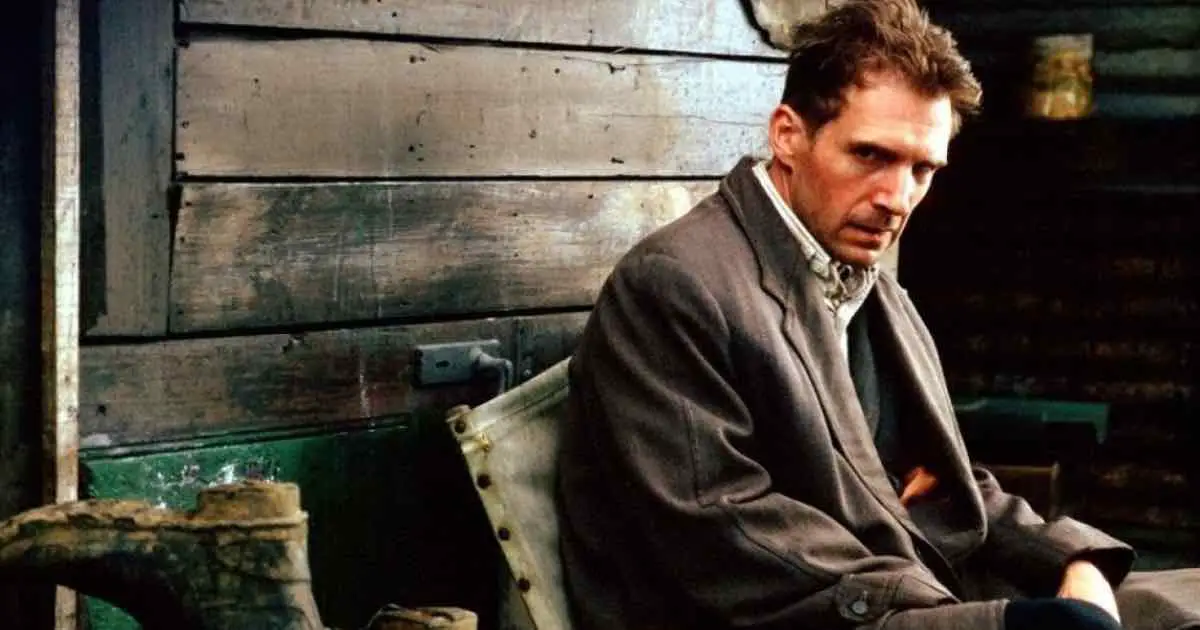
David Cronenberg is known for his trippy dramas and body horrors. From Videodrome, The Naked Lunch to the recent Crimes of the Future, Cronenberg has crafted esoteric narratives full of haunting imagery. Spider is a deviation of sorts for Cronenberg, as his mise-en-scène and visual texture here is more grounded. At the same time, this remains a disorienting and painstakingly detailed exploration of a mental disorder. The film revolves around ‘Spider’ Cleg (Ralph Fiennes), a mentally disturbed man, who arrives at a halfway house upon his release from the asylum. What follows is a stunning journey through the mind of a schizophrenic.
26. Mind Game (2004)
Masaaki Yuasa’s mind-warping anime is something that’s nearly impossible to describe in words. In Mind Game, Yuasa carefully blends different animation styles and cinematic genres to create psychedelic, constantly inventive adventures. Yuasa isn’t concerned with telling a coherent tale, but rather joyously follows an array of quirky characters. It opens with a violent and darkly humorous segment as a young man has a horrific encounter with a ruthless yakuza. This incident leads to hilarious narrative tangents and unbelievably weird circumstances. Overall, it’s a boundary-pushing anime that takes you on a wild ride.
27. Primer (2004)
Writer/director Shane Carruth’s low-budget sci-fi indie focuses on the real-world technology that inadvertently makes time travel possible. Primer bombards us with technical jargons and nitty gritty details of real science. This makes it hard to get into the film. But it largely revolves around two world-weary, engineer friends, who build some machine to seek venture capital. When it becomes clear that the machine facilitates limited time travel, things turn disturbingly complicated. The jarring handheld style, the dense writing, and the unconventional plot structure make this a maddening as well as an oddly fascinating movie experience.
28. Inland Empire (2006)
Shot on a digicam, Inland Empire is the most abstract and ambitious of David Lynch’s masterpieces. It offers an arresting yet incoherent puzzle of a narrative revolving around the actress Nikki Grace (Laura Dern) who is cast in a melodrama. The reality keeps slipping away for Nikki as she can’t differentiate herself from her character Sue. This leads to loosely interconnected vignettes that feel like an individual’s hallucination. But don’t go around looking for answers in this deliberately unhinged narrative. It’d be rather rewarding to surrender yourself to the maverick artist’s vision.
29. Synecdoche, New York (2008)
Charlie Kaufman’s polarising works explore the darkest corners of the human mind and put forth challenging questions. He takes his mindf***ery to new levels in his extravagant and intimidating feature Synecdoche, New York. The film revolves around a depressed theatre director Caden Cotard (Philip Seymour Hoffman), who is tired of mediocrity and yearns for artistic greatness. Therefore, he embarks on a grand project to stage an epic play in a huge warehouse. What unfolds is densely layered and gradually evades our comprehensive capabilities. The film is a jarring yet profound take on the intricacies of human life.
30. Enter the Void (2009)

Gaspar Noe’s films are often disturbing, polarising, and completely unconventional. Irreversible (2002) was an extremely visceral tale of revenge and sexual violence. Enter the Void is relatively laid back compared to Irreversible. But its disorienting fly-on-the-wall cinematography and hallucinative narrative flow make it the ultimate cinematic mindf***. The narrative follows a twenty-something American named Oscar. Early in the film, he is killed and his soul floats around, following his sister. The soul travels through time recounting Oscar’s traumatic childhood. To Noe’s credit, there’s not a single conventional shot in the movie.
31. Uncle Boonmee Who Can Recall His Past Lives (2010)
Thai filmmaker Apichatpong Weerasethakul is known for his non-narrative features that are atmospheric, surrealistic, and mind-bending. Uncle Boonmee, which won the Palme d’Or at Cannes, is one of his most strange and oblique works. The story moves like a slow-burning dream and focuses on the dying uncle in the title. The man sifts through his memories, and is also visited by ghosts in different forms. Uncle Boonmee is a film about the pliability of memory and the transitory nature of the world. Suspended from the confinement of conventional logic, it takes us on a perplexing journey.
32. Inception (2010)
Christopher Nolan’s Inception was one of those rare mind-bending films that enjoyed great commercial success. Leonardo DiCaprio plays the protagonist Dom Cobb, a white-collar thief who can slyly break into people’s minds and steal secrets from their subconscious. Cobb and his group of highly skilled mind invaders can plant an idea into their target’s subconscious. While embarking on a dangerous mission, Cobb’s personal tragedy invades the dream world and puts everyone at risk. Apart from the frustratingly ambiguous ending, Nolan inventively and constantly plays with our understanding of reality, dreams, and memory.
RELATED READ: Inception Explained: Plot, Ending (What Nolan Really Wanted You to Know)
33. Holy Motors (2012)
Leos Carax’s mind-screwing festival hit follows Monsieur Oscar (Denis Lavant), who is driven around the streets of Paris in a limo while he figures out his day’s appointments. The appointments are all about Oscar inhabiting diverse characters from different walks of life. This includes a beggar, a motion capture performer, a gangster, a crazy vagrant, and so on. Holy Motors has generated an intense interest in theorising its meaning. It can be read as a love letter to cinematic genres. A heartfelt portrayal of the gamut of human experiences.
34. Post Tenebras Lux (2012)
Like Apichatpong Weerasethakul, Mexican filmmaker Carlos Reygadas makes opaque and high-concept arthouse cinema which extracts polarising reactions from the audience. Post Tenebras Lux’s fractured narrative focuses on a middle-aged man living in an isolated mansion with his family. There’s no clear-cut connection between each scene. Reygadas pushes us to question the reality in his scenes, as in one moment we see the apparition of a naked red devil. The series of vignettes also jump forward in time. It can be seen as a metaphor for a failing marriage with wilfully perverse and enthralling imagery.
35. A Field in England (2013)
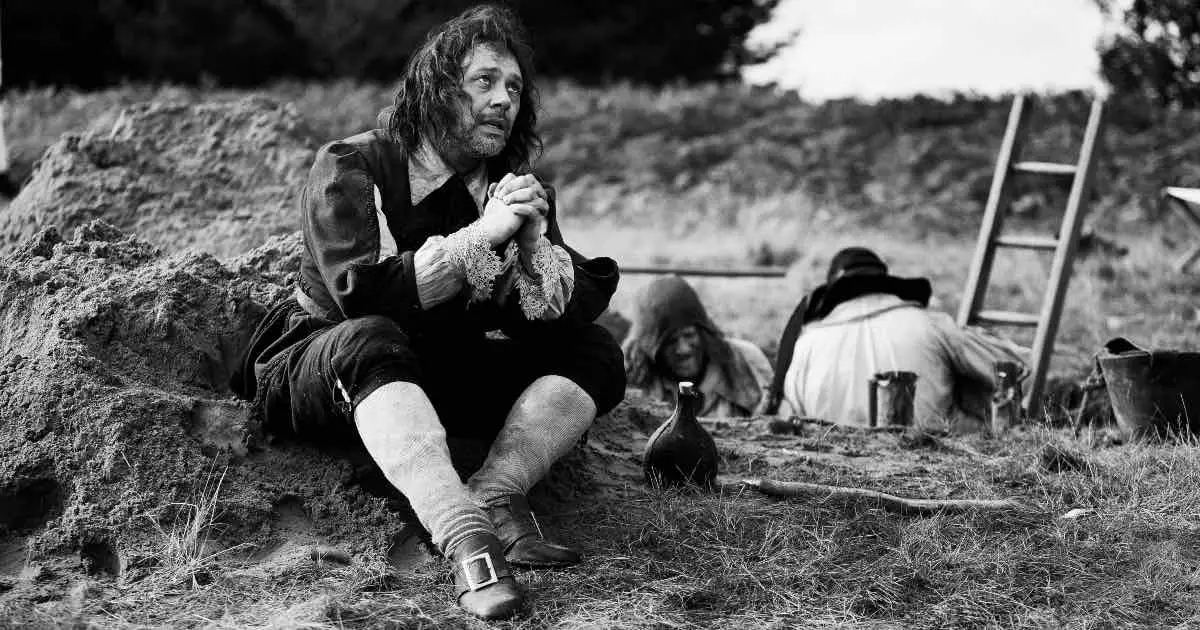
British filmmaker Ben Wheatley has a knack for getting under the skin of his audiences. A Field in England is his dark and inexplicable psychosexual horror that tracks down the characters’ slow descent into madness. The narrative takes place in a desolate field in 17th century England, during the Civil War. Right from the opening scene when a man walks out of a tent with a devilish grin on his face, Wheatley seeks to escape the tyranny of narrative storytelling. In the process, he unrelentingly confuses, disturbs, and frustrates his viewer.
36. Enemy (2013)
Denis Villeneuve’s Enemy is a Kafka-esque mindf***, partly based on Jose Saramago’s intricately plotted novel The Double. Jake Gyllenhaal plays a dual role. One is an increasingly paranoid history professor, Adam Bell who stumbles upon his doppelganger. The double is Anthony St. Claire, a struggling actor. Disturbed by his discovery, Adam initially shadows Anthony from afar. But soon they meet face-to-face and allow their self-destructive tendencies to emerge. Though it sounds like a familiar existentialist thriller, Villeneuve’s mind-boggling imagery unsettles us and constantly pushes us to interpret it.
WATCH: Enemy Explained | Denis Villeneuve
37. The Forbidden Room (2015)
Canadian filmmaker Guy Maddin relentlessly delivers mindf*** movies that assault our senses and sensibilities. Unsettling, nightmarish atmospheres and subliminal images largely dominate his films that usually have a wafer-thin plot. The Forbidden Room was perhaps the most chaotic, disjointed, and playfully perverse feature among his works. It has an endlessly labyrinthine narrative and moves at a breakneck pace. Each story becomes a threshold for more dynamic and crazy imagery. As usual, Maddin pays homage to the bygone silent cinema-era employing a set of early cinematic flourishes.
38. Kaul – A Calling (2016)
Indian-Marathi filmmaker Aadish Keluskar’s feature-film debut tells the mind-wrecking tale of a school teacher transferred to work in a coastal village. An extraordinary encounter in the village slowly worsens his mental state. Keluskar doesn’t attempt to tell a story, but strives to make us experience what the protagonist is going through. The result is a unique and haunting audiovisual experience that evokes terror in the mind of the viewer. Kaul doesn’t scare us using conventional techniques. Its subliminal imagery leaves a deeper, searing impact.
39. mother! (2017)
Darren Aronofsky’s oeuvre offers a lot of wildly unsettling films like Pi (1998), Requiem for a Dream (2000), and Black Swan (2010). But nothing comes close to his audacious mindf*** of a movie mother! For a good part of the narrative, the film unfolds as a tense psychological thriller. A struggling writer (Javier Bardem) and his supportive wife (Jennifer Lawrence) move to an idyllic country estate where a strange couple invade their space. The simmering tension and mystery is soon replaced by the mind-bending third-act. The garb of reality is torn apart and things unfold in alarming rapidity.
40. The Wolf House (2018)
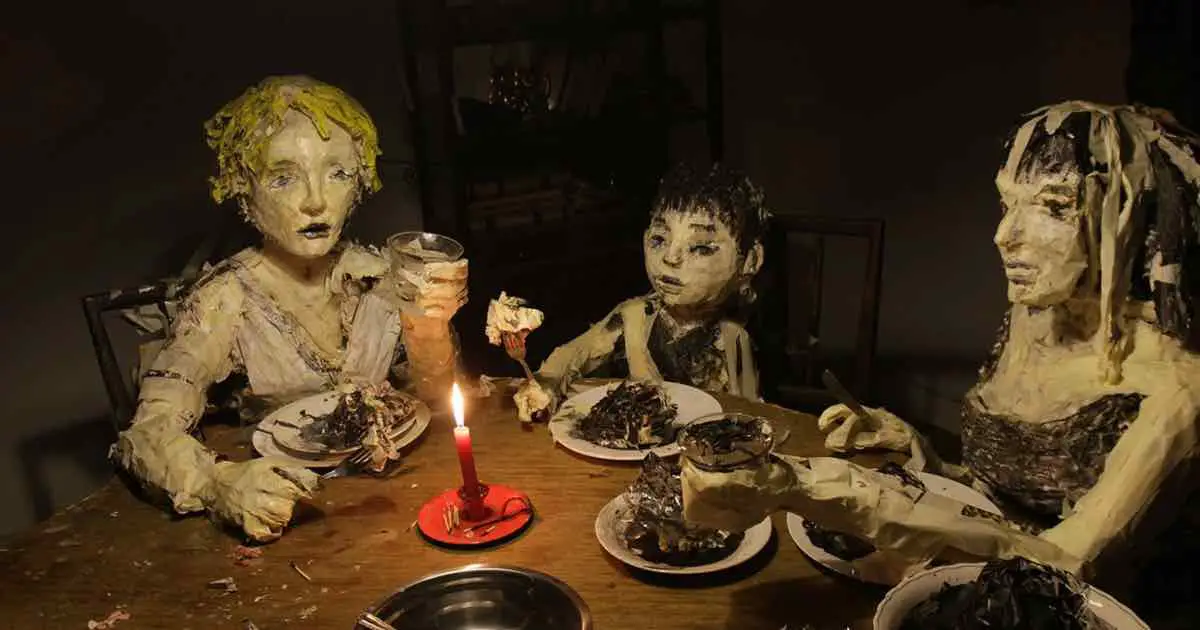
Cristobal Leon & Joaquin Cocina’s abstract, folkloric, and disquieting animated tale opens with the short propaganda film of German fundamentalist colony which set its roots in southern Chile. Known as ‘Colonia Dignidad’, the cult became a small fascist model state. Wolf House inventively fictionalised the story of Maria Wehrle, one of the few people who escaped the cult. But the story is secondary in this macabre manifestation of Maria’s deepest trauma and fears. The animation is so dense and constantly unnerves its viewers. The trippy stop-motion animation reminds us of the dark and extraordinarily detailed worlds of Jan Švankmajer.
Conclusion
There you go! That was our list of best mind bending movies. If you are done watching these, I’d recommend Timecrimes (2007), Valerie and Her Week of Wonders (1970), Hourglass Sanatorium (1973), Rubber (2010), and Tag (2015). Of course, from the unusually captivating to the downright unsettling, there are many other movies out there that might not be part of this list. Let us know movies that scrambled your brains and compelled you to search for an answer or cook up an interpretation.

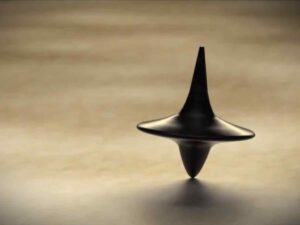
Check out Brand New Cherry Flavor. Not a movie, a series, but it is a pretty disturbing mind fsck.